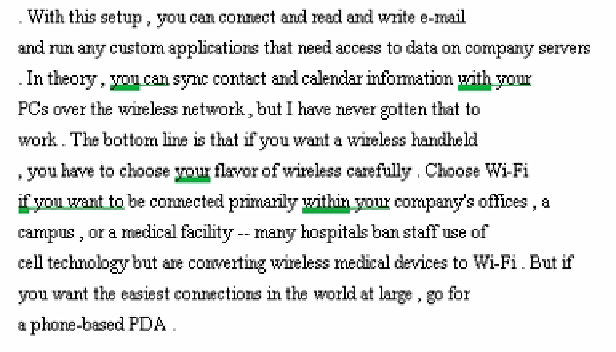Information Technology Reference
In-Depth Information
Fig. 6.
The Conclusion of a Tech Review by Wildstrom (Wildstrom65).
Layered into these subjective perceptions and reader interactions are the
negative standards used by tech reviewers to provide a critical perspective on
tech products and services. Stuart Alsop is particularly adept at using such
standards to criticize the industry as show in Fig. 7. Here, layered with questions
that invite reader interactions with his readers, Alsop uses strong language to
characterize the cell phone industry:
It's a reflection of a
shameful
track record in customer satisfaction and
service. Can you imagine if a third of the people who owned cars bought
new ones every year? (...of course, it's a somewhat
misleading
compar-
ison since there's a robust used-car market, and no one wants a used
cellphone)...customers hatetheir cellular service... . They hatethe un-
reliability and poor quality.
Negative standards were nearly one andone-halftimesmorecommonintech
reviews than in other journalistic pieces (2.02 negative standards per 100 words
in tech reviews versus 1.51 per 100 words in other journalistic pieces).
7Conluon
In this paper we have discussed how a knowledge-based approach to the analy-
sis of texts has produced a rich multivariate model of language with significant
power to analyze and identify genre. Mining rhetorical intuition, we have built
string libraries that harvest and classify readerly understanding of text and we
have shown how discriminate functions built on this analysis can provide signif-
icant support to human readers seeking to identify specific genres within large
textual archives. We have also indicated how a rhetorical reader can use the
specific variables identified by this analysis to provide insight into the language
and culture associated with specific genres. In this way, our work indicates how

Search WWH ::

Custom Search